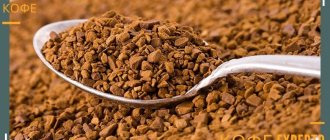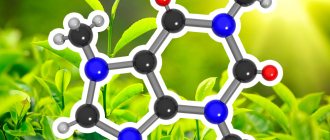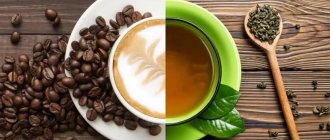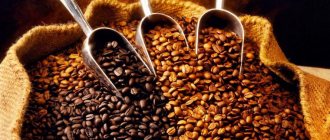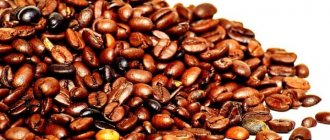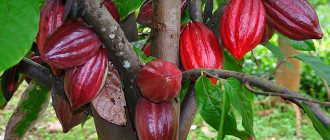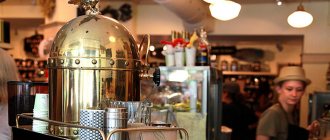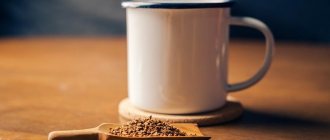Millions of people around the world love coffee and cannot imagine starting the day without a cup of aromatic and invigorating drink. The caffeine it contains is a natural stimulant, which energizes us throughout the day. Some people who love caffeine but have health problems or prefer healthy foods and drinks try to minimize their caffeine intake. They are sure that their favorite drink that does not contain this substance helps them with this.
Is this solution really effective? Do you know how healthy this coffee is? How is it prepared? Does it really not have an ounce of caffeine? It can be assumed that even avid coffee drinkers do not know all the answers to these questions.
How is decaffeinated coffee made?
There are several methods, but their principle is identical. Coffee beans are washed in a solution that consists of water, carbon dioxide and organic solvents. Gradually it washes away the caffeine, leaving behind aromatic beans. This process is carried out before roasting or grinding.
Just not 2 liters: how to find out how much water a particular person needs to drink
Volunteers who tested the Vector vaccine doubt its effectiveness
The oldest sculpture in the world is in Russia: new research
A few words about the Jacobs brand
The history of the Jacobs company begins at the end of the 19th century, when entrepreneur Johann Jacobs from Germany decided to open his own shop with sweets and coffee. Visitors appreciated the grain product most of all, which very soon became very popular. After some time, the entrepreneur expands the scale of his activities and opens a large store on the main street of Bremen.
Thus, at the beginning of the 20th century, the first coffee roasting plant was founded, which was named after Johann Jacobs. A few years later, the Jacobs Kaffee brand was formalized. Since then, the products began to be packaged in branded packaging with the image of a bag filled with coffee beans.
One of the manufacturer’s services was delivery of products to customers’ homes.
During the First World War, the plant was on the verge of closure. Since the sale of coffee beans was prohibited during wartime, Jacobs Kaffee were forced to sell grocery products: sugar, cereals, etc. After the end of the war, coffee products gained popularity again. Then Johann Jacobs, with the support of his talented nephew, revived the enterprise, which began production with redoubled effort. In 1934, the entrepreneur opened a new plant, which at that time employed more than 300 employees.
Since the 60s, Johann Jacobs has handed over the management of the plant to his grandson. The volume of production is growing every year, production is increasing, Jacobs coffee occupies a leading position not only in Germany, but also in other European countries.
Why is there caffeine in decaf?
Decaffeination is a long, complex process and, admittedly, still imperfect. It is almost impossible to remove all the caffeine from a coffee bean. The amount that can be removed depends largely on how strongly the solvents are able to draw out caffeine molecules.
This means that as the beans are decaffeinated step by step, they contain less and less stimulant, making the process increasingly difficult. The last molecules are almost impossible to remove.
Modern production technologies
Decaffeinated coffee is made from green beans and then roasted after filtering. There are several industrial methods of decaffeination:
- Direct, or European. The easiest and fastest way to remove caffeine is to steam or hot water the beans and then immerse them in a solution of dichloromethane or ethyl acetate. After soaking for 10 hours, the organic solvent and associated caffeine are removed by evaporation.
- Indirect. With the indirect method, it is not the grains themselves that are treated with a solvent, but the water in which they are immersed. Soaking is repeated 10-12 times. In this case, the solution is not changed, which avoids loss of taste and aroma.
- Swiss Water method. As in the previous method, coffee beans are repeatedly soaked in water, but the alkaloid is removed from it not with a solvent, but with a carbon filter. An even more expensive variation of the method is “Mountain Water”, in which melt liquid is used for soaking.
- Carbon dioxide. In this method, liquefied carbon dioxide is used as a solvent under a pressure of 300 bar. The method is expensive due to the complexity of the equipment, but safer than decaffeination with organic solvents.
Scientists from Brazil and other coffee-supplying countries are also trying to develop new types of product that are completely devoid of the natural stimulant. Today, there are several varieties of coffee trees whose fruits contain minimal amounts of caffeine. They are called Coffeaarabica and Coffeacharrieriana.
The selection method will allow you to completely preserve the taste of the drink and avoid expensive cleaning.
How much caffeine is in decaf?
According to the US National Library of Medicine, 225 ml of regular coffee contains between 95 and 200 mg of caffeine. Decaffeinated coffee contains from 2 to 15 mg for the same volume. As with regular coffee, this may vary. This mainly depends on how much of this substance was contained in the grains initially in different varieties. In addition, its quantity is influenced by the technique and intensity of the decaffeination process that the manufacturer uses and the method of brewing the beans.
The study, which was published in 2006 in the Journal of Toxicology, measured the caffeine content of 22 different cups of espresso and decaf coffee from a variety of brands, including Starbucks. They found that caffeine content ranged from 2 to 13.9 mg per 225 ml of decaf coffee and from 3 to 15.8 mg in the same amount of Starbucks espresso.
In Russia, the threshold for the incidence of acute respiratory viral infections has been exceeded in some regions
How to water seedlings so that they grow well: 3 top dressings from home remedies
The vaccination certificate will be uploaded to the public services portal
Jacobs "Night & Day" decaffeinated
And this drink was included in the ranking of the best for a reason. This is natural crystallized coffee, which does not contain caffeine, but this does not affect its taste and aroma in any way.
The product is made from Arabica and Robusta coffee beans using the popular Freeze dried technology.
Pros:
- the flavor bouquet is rich in shades of citrus and chocolate;
- aroma like natural;
- quickly dissolves in hot water;
- does not harm health;
- strength like real coffee;
- You can drink it at any time of the day.
Consumers did not find any disadvantages, except that the drink is not available in disposable bags. On store shelves you can find it in a glass jar or in foil soft packaging.
How dangerous is consuming small amounts of caffeine?
Neurologist and sleep medicine specialist Ajay Sampath says a few milligrams of caffeine is unlikely to have a negative effect on most people. True, this depends on several factors, the doctor explains, such as individual sensitivity to caffeine, which is often genetic, as well as tolerance to it, which develops with frequent consumption of the drink. Those who are moderately or mildly sensitive to caffeine and consume it regularly will not be harmed by a small amount in decaf. Luckily, that's most of us.
Who is good for decaffeinated coffee?
For the small number of people who are sensitive to caffeine, even this little amount may be contraindicated, says Dr. Sampath. If you've noticed negative side effects such as increased heart rate, nausea, or anxiety after drinking decaf or regular coffee, you may be sensitive to a stimulant. In this case, it is better to refuse this drink. It can be a problem for those trying to minimize caffeine intake for medical reasons. These are people with sleep disorders, liver diseases that impair the function of this organ, and migraines, says Dr. Sampath.
New Instagram app for kids is in development Facebook
Not a trace remains of childishly chubby cheeks: what the Tolmachev sisters look like
“The gnarled hand of the virus has come for the best of us!”: Ivan Urgant broadcast from home
If you have any concerns about caffeine consumption, you should consult your physician.
Can pregnant women and children eat decaffeinated coffee?
Drinks with high caffeine content are harmful to the health of the fetus or newborn during breastfeeding. To avoid side effects, doctors recommend avoiding drinking coffee and strong tea during pregnancy and lactation.
Nursing and pregnant women are allowed to drink no more than 1-2 cups of drink per day. During lactation, it is recommended to start with small doses of coffee to prevent a pathological reaction in the child.
Due to its stimulating effect on the nervous system, caffeine is not recommended for children. Decaf can be given to them from 6-7 years old. The amount of drink is strictly dosed, since in high concentrations it interferes with the absorption of calcium.
How does decaffeinated coffee affect sleep?
In this case, you need to consider the time of day when you drink it. While the rate at which caffeine is metabolized and how long it lasts in the body can vary from person to person, Dr. Sampath says it typically peaks within an hour and remains in the body for four to six hours. When a caffeine-sensitive person drinks their favorite decaffeinated beverage during a 10 a.m. meeting, they won't have trouble sleeping 12 hours later.
Ordering decaf after dinner, which many people do when they think their cup is 100% caffeine-free, can create some trouble falling asleep.
Grandos "Gold"
Instant crystallized Grandos “Gold” is a 100% natural drink. It is made using Freeze dried (sublimated) technology from an original elite mixture of Arabica varieties.
Pros:
- convenient packaging;
- made in the form of granules that dissolve perfectly in hot water;
- cafein free;
- has a pleasant aroma and a very unusual taste with notes of cocoa;
- easy to brew;
- strong;
- is used sparingly;
- is not addictive;
- safe for health;
- Suitable for people suffering from hypertension.
Minuses:
- a bit expensive;
- not sold everywhere;
- a small sediment remains in the cup.
Consumers note that this coffee is an excellent substitute for regular coffee, because there is no difference in taste, but it is not harmful to health.
Let's sum it up
So, we found that the perception of a small amount of caffeine depends on several factors - sensitivity to caffeine, the presence of certain diseases, tolerance and time of consumption of the drink.
It is important to know that the taste of a decaffeinated drink changes slightly: it becomes softer and more delicate. If you are not satisfied with this, you will have to experiment. To find the perfect coffee for you in terms of strength and aroma, you need to try many types before you find the one that is not much different from the traditional drink that you have been drinking for many years.
If your goal is to completely eliminate caffeine from your diet, then unfortunately you will have to give up this very enjoyable daily habit.
Found a violation? Report content
Differences in taste from standard coffee
Coffee purification technologies are constantly being improved, but not a single method has yet been invented to remove caffeine without losing other substances. Lovers of the dark drink note that decaffeinated varieties have a less complex and multifaceted bouquet than unrefined ones.
To preserve the taste and aroma, high-quality Arabica beans are used to produce decaf. When choosing, it is necessary to take into account that the filtration procedure enhances its natural sourness.
